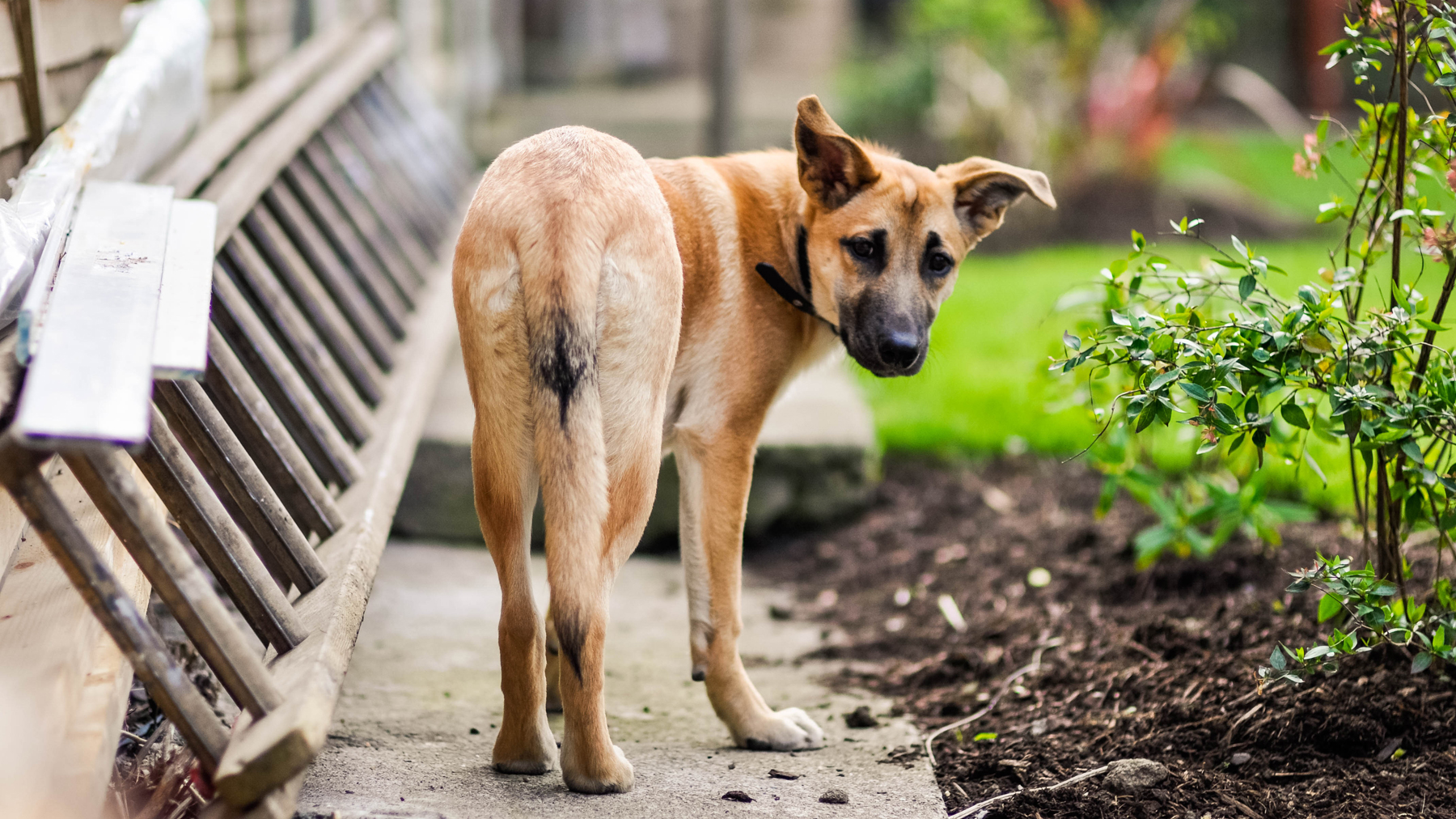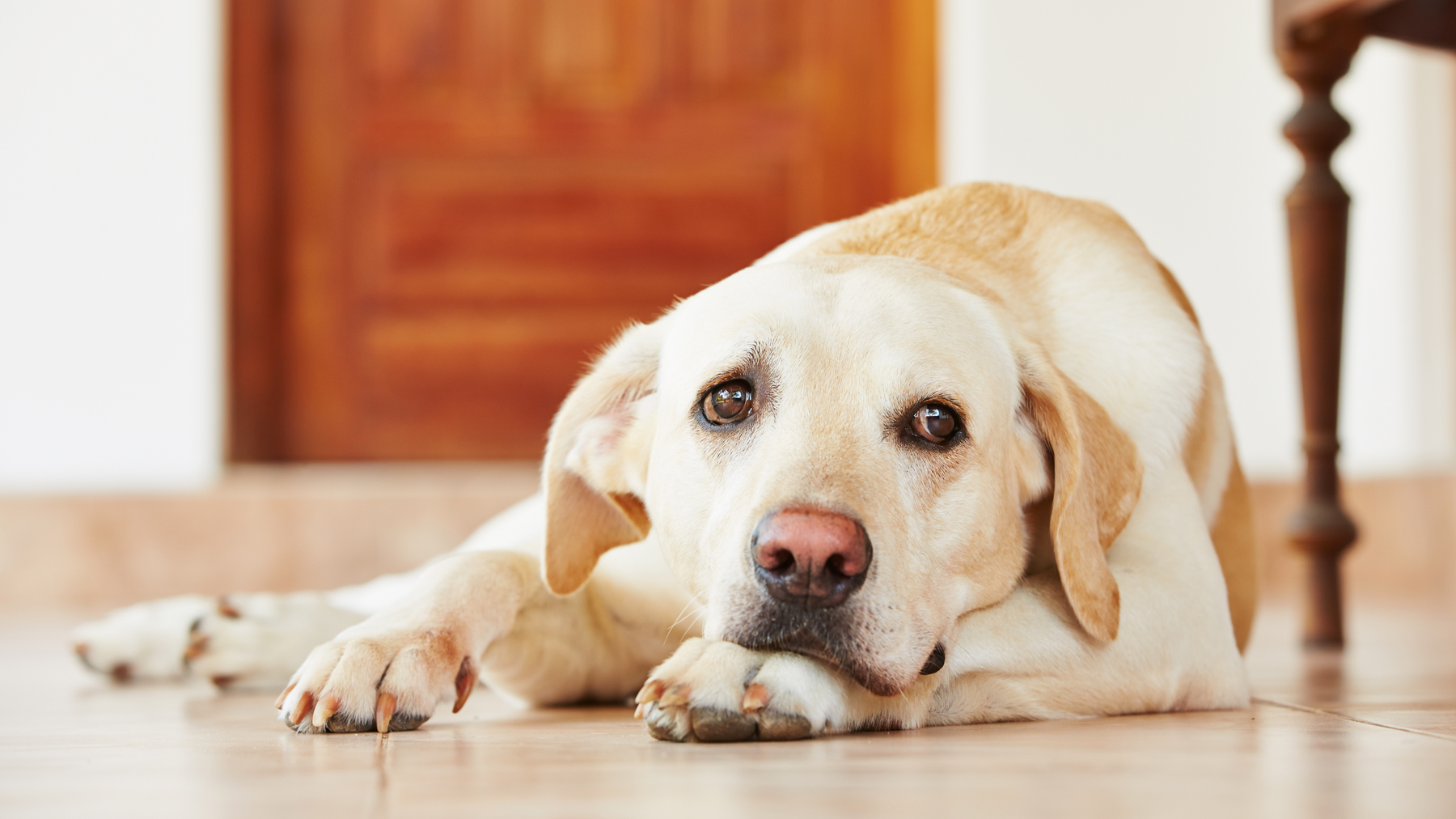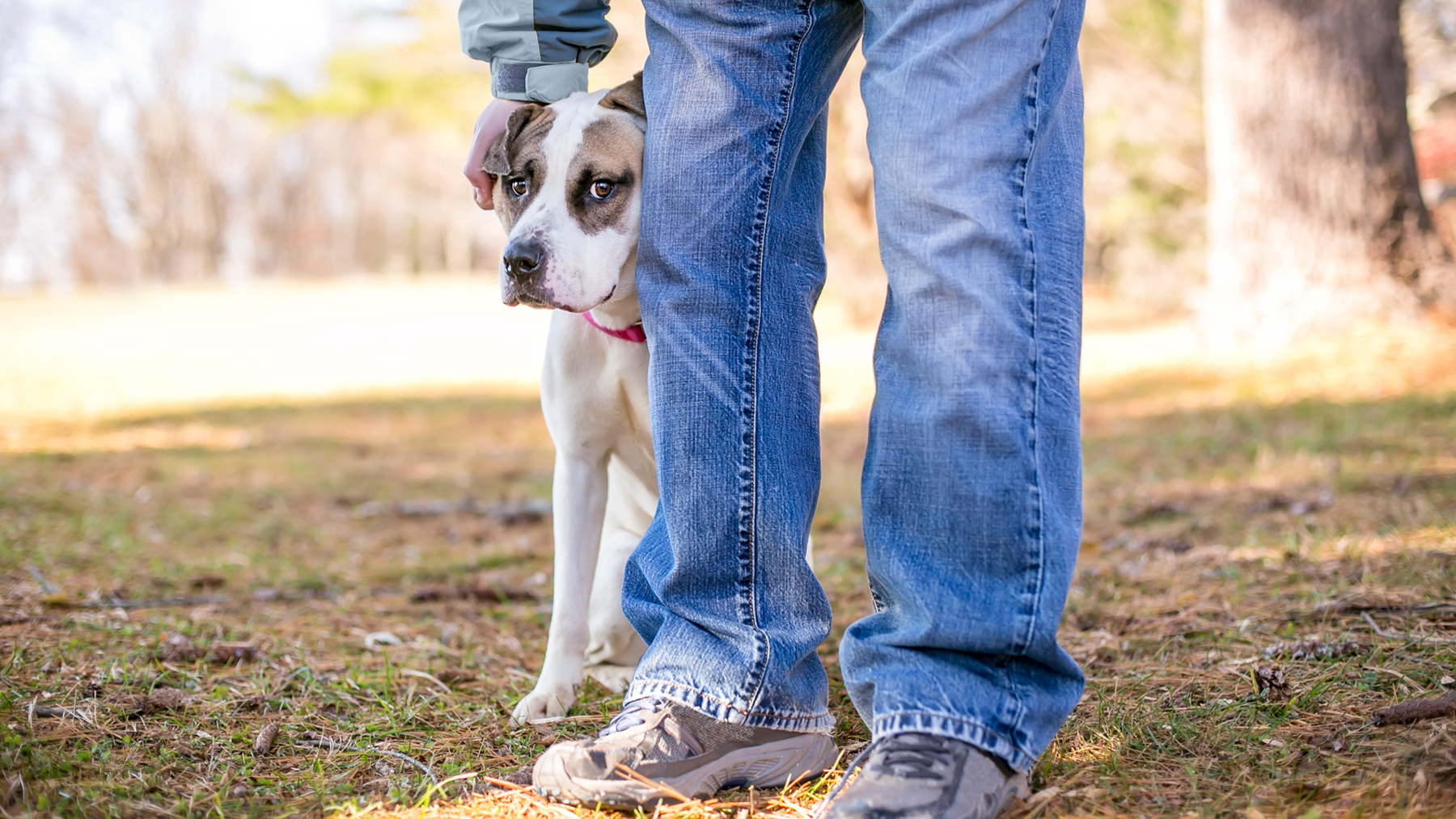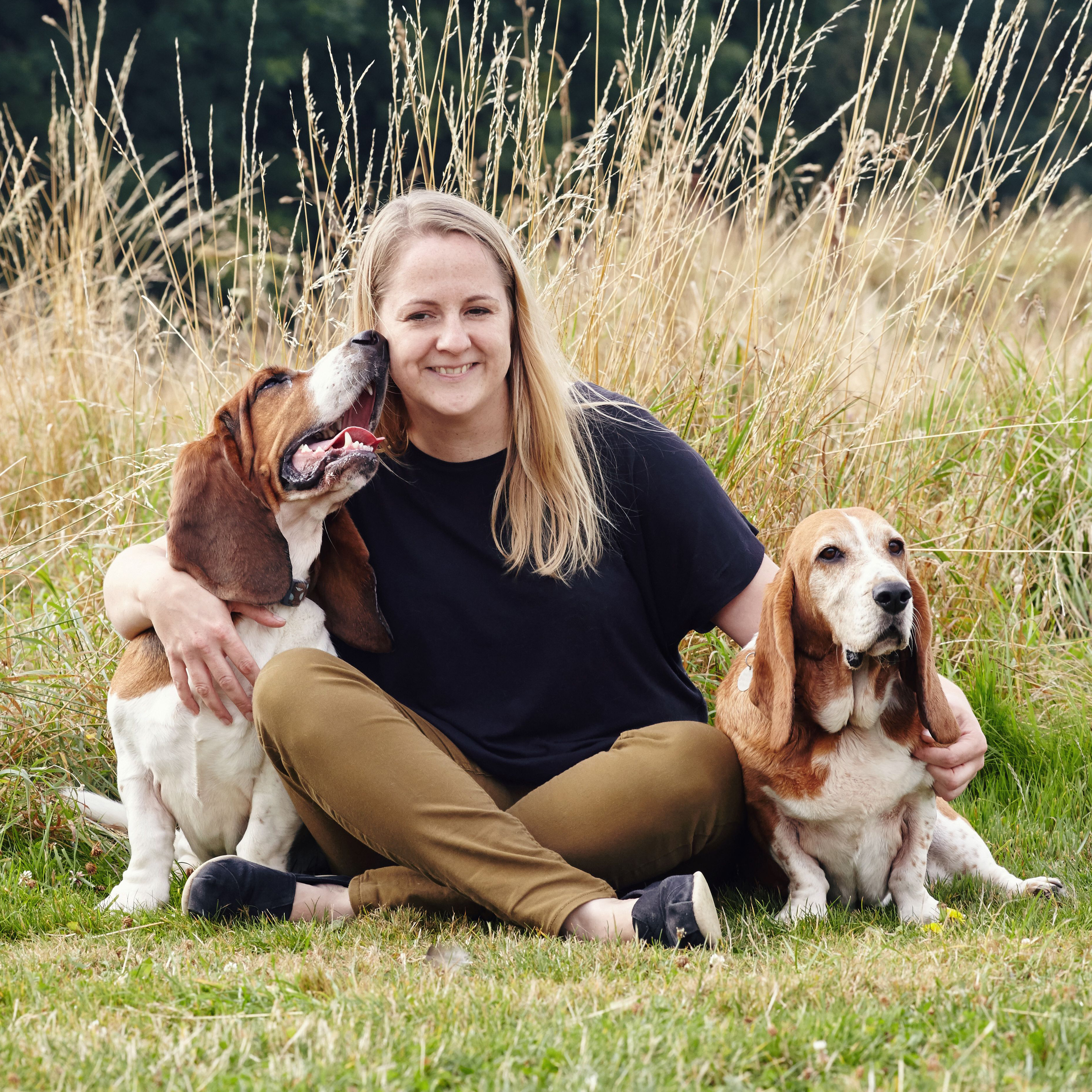Eight reasons why your dog is anxious (and how to help them)
There could be any number of reasons why your dog is anxious - but don’t worry, we’re here to help!

Before we look at the reasons why your dog is anxious, how might you know that they’re feeling that way? Anxiety in dogs is displayed, amongst other behaviors, through fear responses; aggression; noise phobia; separation anxiety; and compulsive behaviors. You might notice your dog displaying stressed-out dog body language such as lip licking, cowering or yawning.
If your dog is anxious this may be impacting their quality of life. Behavior challenges that stem from anxiety often lead to a dog being given up to a rescue center, which is a decision no pet parent wants to make.
As a canine behaviorist, I support the parents of anxious pets to not only reduce the fears their dogs may be experiencing but the stress it’s causing them too. Living with an anxious dog that, for example, you can’t leave alone or who struggles seeing other people and dogs, can be really difficult.
There are many positive ways we can help our anxious dogs to feel more relaxed, from anxiety medication, to using some of the longest lasting chews, or getting more sleep. Let’s delve into some of these ways, with my top eight reasons why your dog is anxious and how you can help them.
Eight reasons why your dog is anxious
1. Past Trauma or Negative Experiences
If your dog has experienced traumatic events - such as being attacked by a dog, beaten by a human, or even just hearing a loud sound - it can have a big impact on their emotional wellbeing. They are more likely to display anxiety around similar situations in the future.
Understanding what situations trigger their anxiety and slowly helping to desensitize them to these things using positive reinforcement methods can help your dog to create new emotional responses in the future. A simple way to get started, is to give your dog some high value food every time it sees the ‘trigger’ (e.g. dog / human) while keeping at a far enough distance from that trigger that your dog isn’t reacting negatively and is able to eat the food.
Separately to this, teach your dog a new skill that they enjoy - this could be something like a hand touch or my favorite exercise for anxious dogs - Ready, Steady, Go. This behavior should first be taught in a space your dog feels relaxed then eventually can be brought into the situations where you dog feels less comfortable. Moving their brain from ‘feeling’ mode to ‘thinking’ can help them to feel more relaxed in those environments. A force-free canine behaviorist can support you with this process.
Get the best advice, tips and top tech for your beloved Pets
2. Lack of Appropriate Socialization
Dogs that have not been properly socialized at a young age with other animals, people, or new environments can become anxious when faced with unfamiliar situations. It’s important to note that socialization needs to be handled carefully, with short positive exposures to new situations. Quality socialization includes pairing something new with a tasty treat or play and responding by quickly removing your dog if they seem scared.
If your dog has lacked early socialization, then you will need to take the process much more slowly as you build their confidence. Pair introductions to new things with a fun outlet for any stressful emotions through play or by adding in the best dog treats scattered on the floor for them to sniff out.
3. Medical Conditions
Underlying medical conditions, such as pain, thyroid disorders, or hormonal imbalances, can manifest as anxious behavior in dogs. For example, a high proportion of dogs with noise phobias are experiencing pain. If you suddenly see your dog’s behavior changing, it’s important to get them checked out by your vet - with a physical examination and full blood panel.
If they are put onto a pain trial - whereby pain relief is provided - this should be carried out for six to eight weeks while watching for your dog’s behavior to improve. Journaling their daily response to situations they might usually struggle with can help you to understand if the pain relief is helping them to feel more confident. Once the pain trial is complete, your vet will most likely suggest ways to resolve the pain your dog might be experiencing through further investigation such as MRIs or physiotherapy.
If your dog has an issue such as hypothyroidism, which can cause behavioral problems, they may need long term medication to help.

4. Poor Breeding
Sadly, some dogs have a poor start in life by being born into puppy mill environments or having parents who have anxiety themselves. Puppy mill dogs are often malnourished and underexposed to the world they’ll be living their life in. If you suspect your dog was poorly bred, then focusing on improving their gut health and working on slow positive exposures to new experiences are the ways to get started.
A blend of pre/pro-and post-biotics may help your dog’s gut recover from its poor start in life, alongside a quality natural and unprocessed diet.
Building in short exposure to new experiences, combined with something your dog enjoys - such as food of play - can help them to grow in confidence.
5. Poor Diet and Gut Health
The stomach is known as the ‘second brain’ for a reason! Most of our dog’s serotonin - a hormone which helps regulate mood - comes from the stomach. While a healthy gut and microbiome is important for your dog’s overall wellbeing, it’s especially important for dogs suffering with any form of behavior challenge. Signs your dog’s gut might not be optimal are regular bouts of diarrhea or sickness, skin allergies, or pica - the eating of non-food items. You might want to consider switching from a highly processed diet to one that’s either lightly cooked or the best raw dog food.
If you’re not sure if your dog’s diet is suiting them, then a gut health test to check out what’s going on in their microbiome can be really useful. It’s a great way to see if your dog has all the bacteria it needs in their gut to help them to properly digest their food as well as improve their mood state.
6. Life Changes
Many dogs thrive on a consistent routine, especially if they're struggling with anxiety. It allows them to feel more relaxed as they’re able to predict what’s going to happen next. Sudden changes in their daily schedule or environment can trigger anxiety as they struggle to adapt.
If your dog has lost a person close to them it can be useful to offer them some natural supplementation to deal with the immediate grieving process. You might want to learn how to spot the sign of grief in pets.
If you are moving home, bringing with you familiar items such as their bed and favorite puppy toys can help them to feel more settled. Keeping important elements of their usual routine at the same time as usual can also help - mealtimes and walks are a good place to start.
If they’re going to be staying with a dog boarder while you travel, setting up short settle-in visits in advance will help them familiarize themselves with this new environment. Again, take some familiar smelling objects - such as their bed - with you when they stay.
7. Owner’s Emotions
While we don’t like to think we could be the cause of our dog’s anxiety, they are highly attuned to what we’re feeling. If you are feeling stressed, anxious, or upset, your dog might pick up on these feelings and become anxious themselves.
Doing slow, paced breathing can help reduce your anxiety. Breath in through your nose, slowly, to the count of four. Hold your breath for seven seconds. Slowly release your breath to the count of eight through your mouth. If you’re on a walk, slowly run your hand up and down your dog’s lead as you do each part of the breathing exercise to avoid tensing up on holding the lead.
Take the time to do fun things - such as long hikes or playing games - with your dog to boost both of your moods. Make sure you’re looking after your end of the lead just as well as you do your dog!
8. Poor Sleep
One thing that’s often overlooked when it comes to dog behavior is how much sleep and rest your dog is getting. While anxious dogs can often fall asleep quickly, they are inclined to wake up sooner - getting less of the deep regenerative part of the sleep cycle. Sleep helps with a reduction of the ‘stress hormone’ Cortisol so it’s vital to prioritize rest amongst your dog’s other activities. It’s all about balance.
Try creating a sleep or rest journal for your dog - each day listing what your dog’s mood was like in the morning and evening, based on how barky or restless they were; how much sleep and rest they’ve had; plus a list of events - including walks, visitors and external disturbances. Then note down how relaxed your dog was in the evening.

Living with an anxious dog can be hard. You want the best thing for them but sometimes it feels hard to know where to start. The advice above is a great place to start - but having a behaviorist such as myself to guide you through the process can be really helpful to make sure you’re staying on track. The great news is that your dog’s anxieties can be managed to make life easier and, in many cases, even overcome completely.
Read next: 10 signs your dog is happy.

Caroline Wilkinson is a Certified Animal Behaviourist. She is a Full (assessed) Member of the APDT and INTODogs – as well as a Registered Training Instructor (ABTC). Caroline is also a Certified Real Dog Yoga Practitioner and an Applied Canine Zoopharmacognosist.

Caroline Wilkinson is a Certified Animal Behaviorist. She is a Full (assessed) Member of the Association of Professional Dog Trainersand INTODogs – as well as a Registered Training Instructor (ABTC). Caroline is also a Certified Real Dog Yoga Practitioner and an Applied Canine Zoopharmacognosist.
As the founder of digital pet coaching service Barket Place, Caroline has a passion for improving connections between human and hound, with a focus on relationships and reduction of stress for canines living in a human world. She helps pet parents, like you, to work through challenges they may be experiencing with their dog's behavior, so that they can get back to the important job of loving their dog.
Caroline writes for Edition Dog Magazine, as well as a number of trusted pet brands. She also speaks around the country – presenting workshops and webinars with a focus on living more mindfully alongside our canine companions. She is also the co-host of chart-topping podcast, ‘Supporting Both Ends of the Lead’ and has spoken about dangerous dogs on BBC Points West and BBC Radio Bristol.
